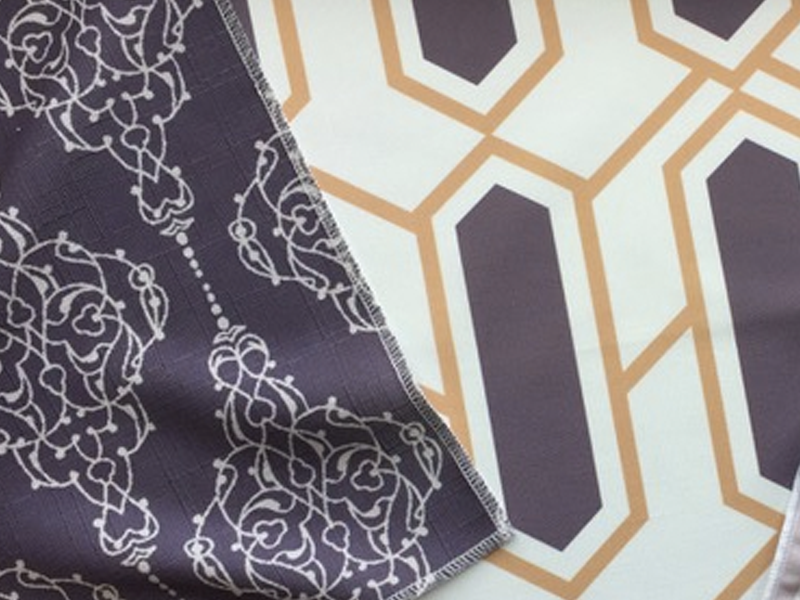For this week’s edition of our Textile Design Guide, we are exploring two distinct yet easily confused design movements: Art Nouveau & Art Deco. Spanning from the late 19th century into the early 20th, these two movements accentuated the Industrial Revolution, the prosperity that followed, and the growing embrace of modernism. Read on to learn more!
Art Nouveau
While rooted in the Arts and Crafts movement of the late 19th century, Art Nouveau—or “new” art—represents the beginning of modernism. This artistic era, developed in the wake of the industrial revolution, spanned from 1880 to the First World War. At its essence, Art Nouveau epitomized the thesis that there should be no differentiation between the so-called “fine” arts of painting and sculpture and the “applied” arts of architecture, textiles, or metalwork. This philosophy, known as Gesamtkunstwerk, encourages the use of multiple artistic aesthetics to create works of total art. In this manner, Art Nouveau sought to bring the beauty of art into everyday functionality. Ironically, many Art Nouveau advertisements have resurfaced as popular decorative posters today.

An example of Art Nouveau design on a cosmetic label
Stylistically, Art Nouveau draws its inspiration from organic forms with flowers and leafy vines forming spiraling, intricate designs. Many of these designs showcase “whiplash” lines to depict a sense of dramatic momentum and vitality.
Art Nouveau also reveled in creating a sense of two dimensionality with flat blocks of color. In terms of the color palette, this aesthetic primarily draws upon shades of green and yellow with the odd pop of purple, blue or red.
Shop Art Nouveau patterns from WeaveUp here.
Art Deco
Art Deco emerged as the predominant artistic movement of the 20s and 30s. Officially named during the Parisian Exposition Internationale des Arts Decoratifs et Industriels Modernes in 1925, Art Deco is also known as style moderne. Rebounding from the destruction and austerity of the war, the interwar years showcased a desire for glamour, sophistication, and luxury. Art Deco was inspired both by the advances in modern technology as well as the growing sense of freedom epitomized by the flapper. However, as war approached once more, Art Deco began to wane from popular culture.

WPA Travel Bureau Print from 1936
This style has a distinctively streamlined look that features geometric shapes and symmetrical patterns. Art Deco draws both from Cubism’s fracturing of shapes, as well as the “primitive” arts, such as the stepped architecture of the pyramids. Meanwhile, the color palettes incorporate bold, contrasting shades. In terms of design motifs, Art Deco propagated the chevron zigzag, the sunburst, and the lightning bolt. We love the clean lines and entrancing patterns of this style.
Explore the Art Deco prints from our collection here.
Check back next week as we continue to explore easily confused design movements. Have you missed any of our Textile Design Guide series? Catch up here.









Leave A Comment